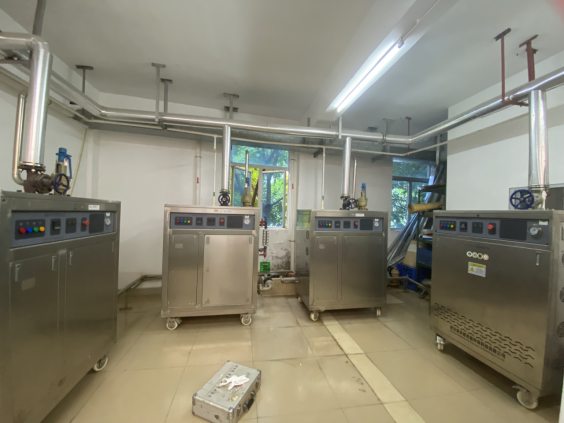Steam sterilization process
The process of steam sterilization consists of several steps.
1. The steam sterilizer is a closed container with a door, and the door needs to be opened to load materials.The door of the steam sterilizer must prevent contamination or secondary pollution of items and the environment in clean rooms or situations with biological hazards.
2 Preheating means that the sterilization chamber of the steam sterilizer is wrapped with a steam jacket. When the steam sterilizer is started, the jacket is filled with steam, which preheats the sterilization chamber and serves to store steam. This helps reduce the time it takes for the steam sterilizer to reach the required temperature and pressure, especially if the sterilizer needs to be reused or the liquid needs to be sterilized.
3. The sterilizer exhaust and purge cycle process is an important consideration when using steam for sterilization to exclude air from the system. If there is air, thermal resistance will be formed, which will affect the normal sterilization of the contents by steam. Some sterilizers intentionally retain a portion of the air to lower the temperature, in which case the sterilization cycle will take longer. According to EN285, the air detection test can be used to verify whether the air has been successfully eliminated.
There are two ways to remove air:
Downward (gravity) discharge method – Because steam is lighter than air, if steam is injected from the top of the sterilizer, the air will accumulate at the bottom of the sterilization chamber where it can be discharged.
The forced vacuum exhaust method uses a vacuum pump to remove the air in the sterilization chamber before injecting steam. This process can be repeated several times to remove as much air as possible.
If the load is packaged in porous materials or the structure of the equipment is likely to allow air to accumulate (e.g., equipment with narrow internal cavities such as straws, sleeves, etc.), it is very important to evacuate the sterilization chamber and the exhausted air should be handled with caution. , as it may contain dangerous substances to kill.
The purge gas should be filtered or adequately heated before being discharged to the atmosphere. Untreated air emissions are associated with increased rates of nosocomial infectious diseases (infectious diseases that occur in a hospital setting) in hospitals.
4. Steam injection means that after steam is injected into the sterilizer under the required pressure, it takes a period of time for the entire sterilization chamber and the load to reach the sterilization temperature. This period of time is called “equilibrium time”.
After reaching the sterilization temperature, the entire sterilization chamber is kept within a sterilization temperature zone for a period of time, which is called the holding time. Different sterilization temperatures correspond to different minimum holding times.
5. The cooling and elimination of steam is that after the holding time, the steam condenses and is discharged from the sterilization chamber through the trap. Sterile water can be sprayed into the sterilization chamber, or compressed air can be used to accelerate cooling. It may be necessary to cool the load to room temperature.
6. Drying is to vacuum the sterilization chamber to evaporate the water remaining on the surface of the load. Alternatively, cooling fans or compressed air can be used to dry the load.
